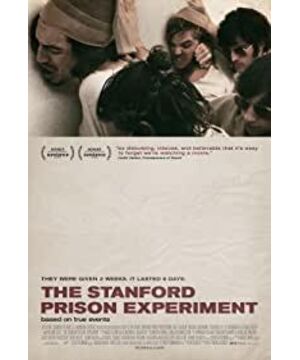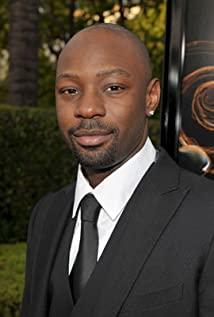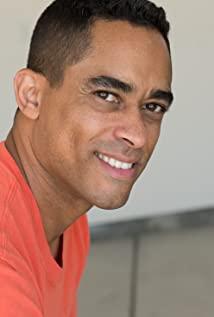Secondly, the film deliberately erased some key details of the experiment and added many politically correct motions, deliberately using its own methods to make subjective judgments on the results of the Stanford prison experiment, and to serve the entertainment effect of the thriller.
In the famous Stanford prison experiment, we know the causes and the consequences. But what is the process? You and I don't know, but logic is unchangeable. Many friends also asked the same questions about this film:
1. Why the prisoners did not resist.
This is just an experiment, and the prisoners and guards know it. The guards of "John Wayne" in the movie made the prisoners feel bad on the first day, causing them to break out of resistance. But this is not the case. In fact, "the first day was calm, and the second day the prisoner in the first cell locked the door and abused the guards. The guards had no choice but to work overtime and use the fire extinguisher when the guards did not see them. Be the 3 guards. When guarding 9 prisoners, the guards felt pressure. Therefore, they proposed to establish a special prison to allow prisoners who did not participate in the disturbance to get better treatment and better food, but they were rejected by these prisoners. "
So, you can watch. The prisoners not only resisted, but were also extremely united, which put tremendous pressure on the guards. Because the number of guards was far fewer than the prisoners, the guards began to "propose the use of force." This logic is obviously more in line with human nature. Many massacres in the evolution of demonstrations in history have been caused by guns and misfires. A certain police officer was too scared to shoot at unarmed citizens, which led to the spread of fear.
2. Why did the guards and prisoners enter the role so quickly?
Until the end of the movie, the movie didn’t give a good reason. Everyone said, “I can’t do this anymore, I hate myself too much” on the other hand. This is God's will and must be carried out. But the fact is
"The Stanford experiment was funded by the U.S. Office of Naval Research, with the full cooperation of the "palo alto" police department. All prisoners were taken directly from their homes by police officers, and the arrest procedures were completely completed. From handcuffs, police cars, hoods to swearing , Fingerprints, and photographs. After completing a complete set of judicial procedures, he was sent to Stanford Prison."
"Kimbado requires guards to give prisoners a sense of trapping, a sense of fear, and create a sense of authority, so that they I realize that everything they have belongs to us, belongs to the system, you, me, and they don’t have any personal privacy. In the next few days, we will deprive them of their independence, and eventually lead them to a sense of powerlessness. That’s it, during this period we They have all power but they have no rights.”
So, there is actually a deep motivation in this, that is, guarding oneself is also part of the system, and it has been controlled by Campardo from the beginning. Like many eagle dogs of a totalitarian government, they are just ordinary people. They beat pregnant women and children, and demolish the houses of the elderly. They are only driven by greater insecurity, but the movie does not mention this.
3. Is Jinbaduo sick?
The film portrays Jinbaduo as an evil scientist who wakes up at the last moment and terminates the evil experiment. The original deadline for the Stanford experiment was 7-14 days, or 2 weeks. But it ended in only 6 days. "Of the more than 50 people who observed the experiment together, only the girlfriend of Jimbardo, Christina, who later became his wife, raised moral questions." And Campardo directly stopped the experiment. In fact, like other psychologists, Campardo is observing all the reactions of people, and he has noticed the reactions of more than 50 people. In the face of unfairness and obvious moral dilemmas, most people did not raise objections.
The film’s portrayal of Campardo is very superficial, just like Frankenstein, he wants to control what he cannot control.
And I think this is just a flaw in the experiment itself. He simply wanted to play role-playing games in a simulated way, thinking that he could get real results in this way.
The fact is that he allowed direct relationships between the subjects while telling them that he was monitoring them, and the behavior of many people might be exaggerated, just like those in reality shows today. Subjects are easy to influence each other, and group effects and identity recognition will prompt them to rapidly intensify conflicts. And all this happens in a small environment. You can try to think about the following scenario: A group of people crowded the elevator, and at this time, the elevator broke down. The elevator repairer said that everyone was stuck on the road for 3 hours and couldn’t move. At this time, you (a big fat man) fart and see if someone loses control and beats you to death. Others will Will not help.
"John Wayne," the guard of the nickname said, "What he wants to happen, he has integrated the role of John Wayne that he has always wanted to play into his role as a guard, and he wants to see what happens. No one would stop him, but in the end no one wanted to stop him. "The question is, is this caused by his supreme power, or is he paranoid?
At the end of the movie, it clearly reflects the Guantanamo prisoner abuse incident. The guards asked the prisoners to make sexual gestures. This is because the film was shot based on the book "The Lucifer Effect" by Quimbardo (not based on the Stanford Prison Experiment). This is a book written by several people in Jinba who combined the experiment and the Guantanamo prisoner abuse incident. He himself is also a member of the lawyers' advisory group for prisoner abuse incidents. He believes that Lindy, who abused prisoners at Guantanamo, is the same as the prisoners in the Stanford experiment. Good people have become bad people in this special environment. Therefore, what this movie wants to express is the theme of "Death Experiment", but because of subjective emotions, it deliberately weakens the rationality of people's psychological description, and it is not like "Death Experiment" that directly avoids the system, totalitarianism, standardization and elimination of personalization. It hurts human nature, but only picked up Campardo as a scapegoat, leaving the audience extremely uncomfortable and desperate after watching it.
View more about The Stanford Prison Experiment reviews











